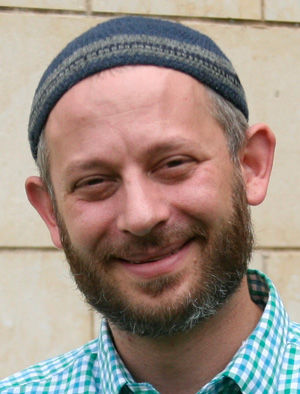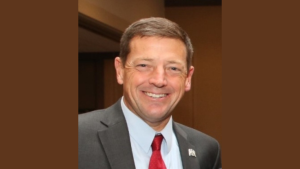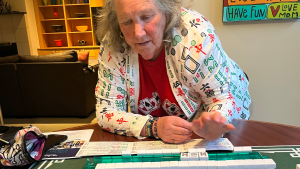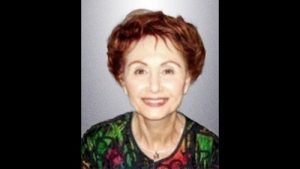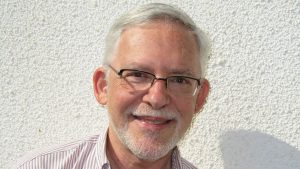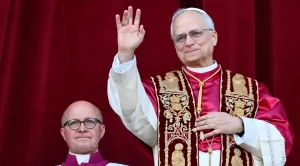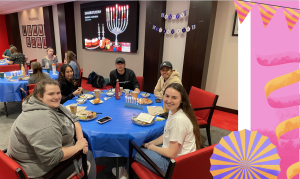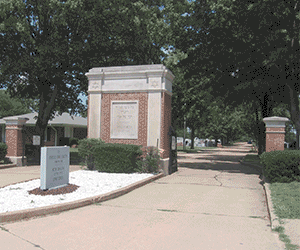Gratitude activism: The people we see, the tables we share
Published September 21, 2016
The Middle School students of the Saul Mirowitz Jewish Community School had studied historical events that precipitated struggles for racial equality in the 1960s. They explored literature capturing divergent perspectives on lived experiences and the emotional atmosphere of the time and delved into ways in which Jewish law assesses damages to be paid as recompense to parties that have been wronged. Now each student carried the first fruits of their academic and emotional learning into this dimly lit room of the Birmingham Civil Rights Institute.
They took turns standing rapt, frozen, before the full Ku Klux Klan uniform behind glass. After reading interpretive material for the display to themselves, some then re-read it aloud to friends. Students expressed gratitude that the Klan was not active in St. Louis and disbelief that the uniform looked so new. It had been donated in the 1990s. Our tour guide in Selma shared a story with us of everyone in Selma waking up to recruitment leaflets from the Klan on their cars the morning of President Barack Obama’s appearance marking the 50th anniversary of the Voting Rights March from Selma to Montgomery—last year. In facing the real historical progress our country has made towards racial equality, how can our sense of gratitude not cool our empathic response to the degradation of people of color within our community, but rather quicken our hearts and hands to address structures still exercised in support of white supremacy?
In Parashat Ki Tavo we read about the ritual of bikkurim—the first fruits. Each person who harvests from their own plot within the Land of Israel any of the seven species native to the Land of Israel must take a selection of the first produce of that harvest to Jerusalem. The harvester presents it in a basket to a kohen (priest) who then places the basket before the altar in the Temple. The pilgrim proceeds to recite a ritual script. Every generation describes the oppression suffered by the generations in Egyptian slavery as well as God’s liberation of the Israelites at the hand of God, and—ultimately—recognizes arrival in the Land of Israel as well as God’s hand in all agricultural success. Every statement is made in first person. The bringer-of-first-fruits speaks in the voice of one who personally participated in every aspect of this multi-generational, national experience of oppression and redemption. Finally, our basket-bringer joins with the landless Levi class and the stranger in a ritual meal by which they consume the first fruits that had been placed in front of the altar during the recitation of the ritual script.
Many see the divine goal of the spoken portion of this ritual as placing words of gratitude into the mouths of those who now experience privilege and security. The culminating meal shared with the Levite and the stranger may be seen as an embodied gratitude ritual that further increases justice by providing food and community to those whose food security or social status marginalize them.
Mishnah Bikkurim 3:3 details this gratitude and unification ritual more fully–describing Jerusalem’s overseers, officers, treasurers, and skilled professionals coming out to stand and receive the farmers in person as they enter Jerusalem carrying their first fruits. City-dwellers stand before the farmers, ask about their welfare, call them “brothers,” name the places from which they travelled, and say, “You have come for peace!” Rabbi Yitzchak HaKohen Kook, in his commentary on this mishnah, recognizes a disconnect, perhaps even a denigration of the other, to be seen in the perspective of the city folks towards the farmers:
“…. When the nation is morally depraved, when individuals’ eyes and heart are only upon money, these two types, those who engage in nature and those who engage in artifice become alienated from one another. The farmers, who dwell in villages close to nature, will be the object of disrespect on the part of the professionals who have figured out how to live by civilization divorced from nature.”
The Jerusalem dwellers’ standing in respect for and engaging directly with these farmers, Rav Kook suggests, can help to dismantle any alienation between these groups–due to social status, wealth, or perhaps even geographic location.
Though here he clearly discusses dismantling the alienation between farmers and professionals, I can’t help but wonder if Rav Kook’s commentary might apply more broadly to other forms of alienation.
As we approach this High Holiday season with both gratitude and a deep desire for transformation, might we ask ourselves in what way each of us are farmers and in what way each of us are are Jerusalem dwellers? What story do we tell God, in the presence of our own people, about our ongoing Jewish struggle to transcend oppression? Who might we stand and respectfully face, to ask about their welfare, to call them “brothers”, to recognize their geographic homes, to recognize the benefits we have derived from their blessed, creative, nourishing work, and to declare aloud towards them, “You have come for peace”? What are the first fruits of justice that God has allowed us to reap this year and for which we are grateful? And–perhaps above all else–in our ongoing efforts to serve God by dismantling enduring structures of alienation and oppression, who–marginalized by food insecurity or social status–will we invite to our welcome tables this season to share in the first fruits of our collective liberation?



